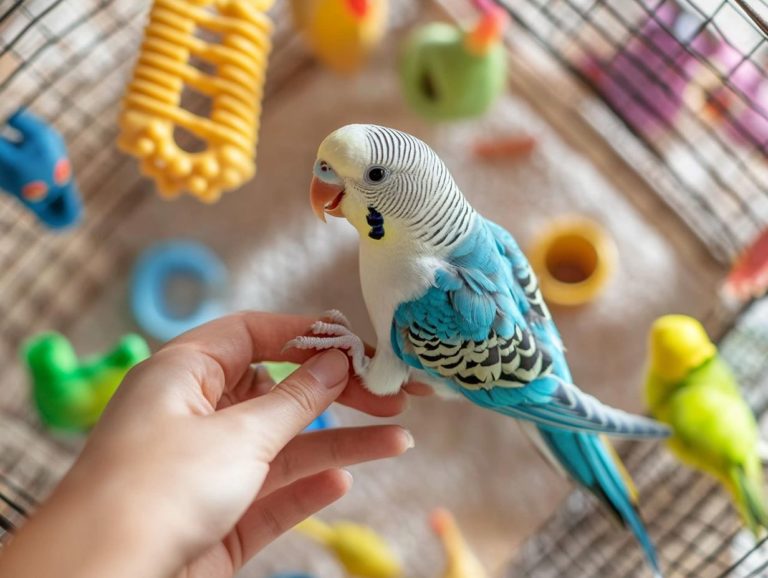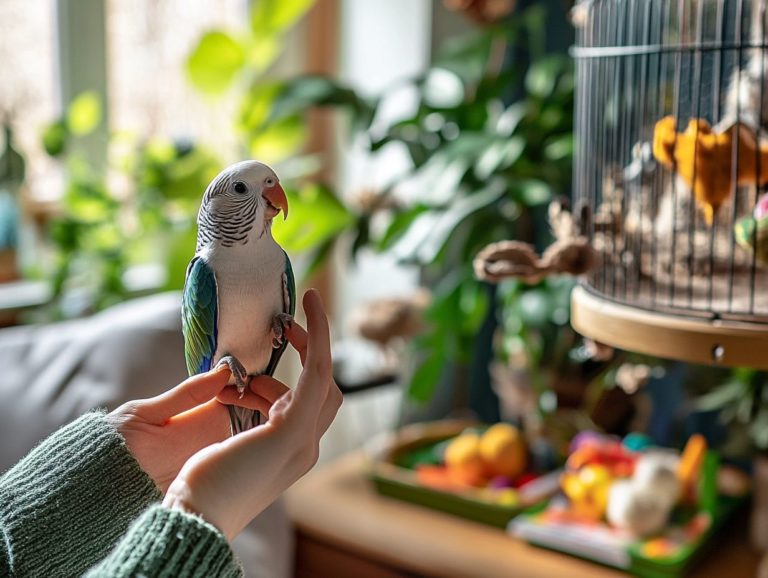5 Benefits of Clicker Training for Birds
Clicker training isn’t just for dogs; it can work wonders for birds, too! Get ready to bond with your feathered friend!
This article explores the amazing benefits of clicker training. You’ll see how it can improve communication and strengthen the bond between you and your bird. It encourages good behavior and offers essential mental stimulation.
You ll learn how to use clicker training for specific tricks and behaviors, helping to build trust and boost your bird s confidence.
If you’re eager to start this journey and avoid common pitfalls, keep reading for valuable tips and insights!
Contents
- Key Takeaways:
- 1. Improves Communication and Bonding
- 2. Encourages Positive Behavior
- 3. Provides Mental Stimulation
- 4. Can Be Used for Training and Enrichment
- 5. Builds Trust and Confidence
- What Is Clicker Training and How Does It Work?
- Frequently Asked Questions
- What is clicker training for birds?
- What are the benefits of clicker training for birds?
- How does clicker training improve communication with birds?
- What role does clicker training play in bonding with birds?
- Can clicker training benefit a bird’s mental health?
- How can clicker training help reduce stress in birds?
Key Takeaways:
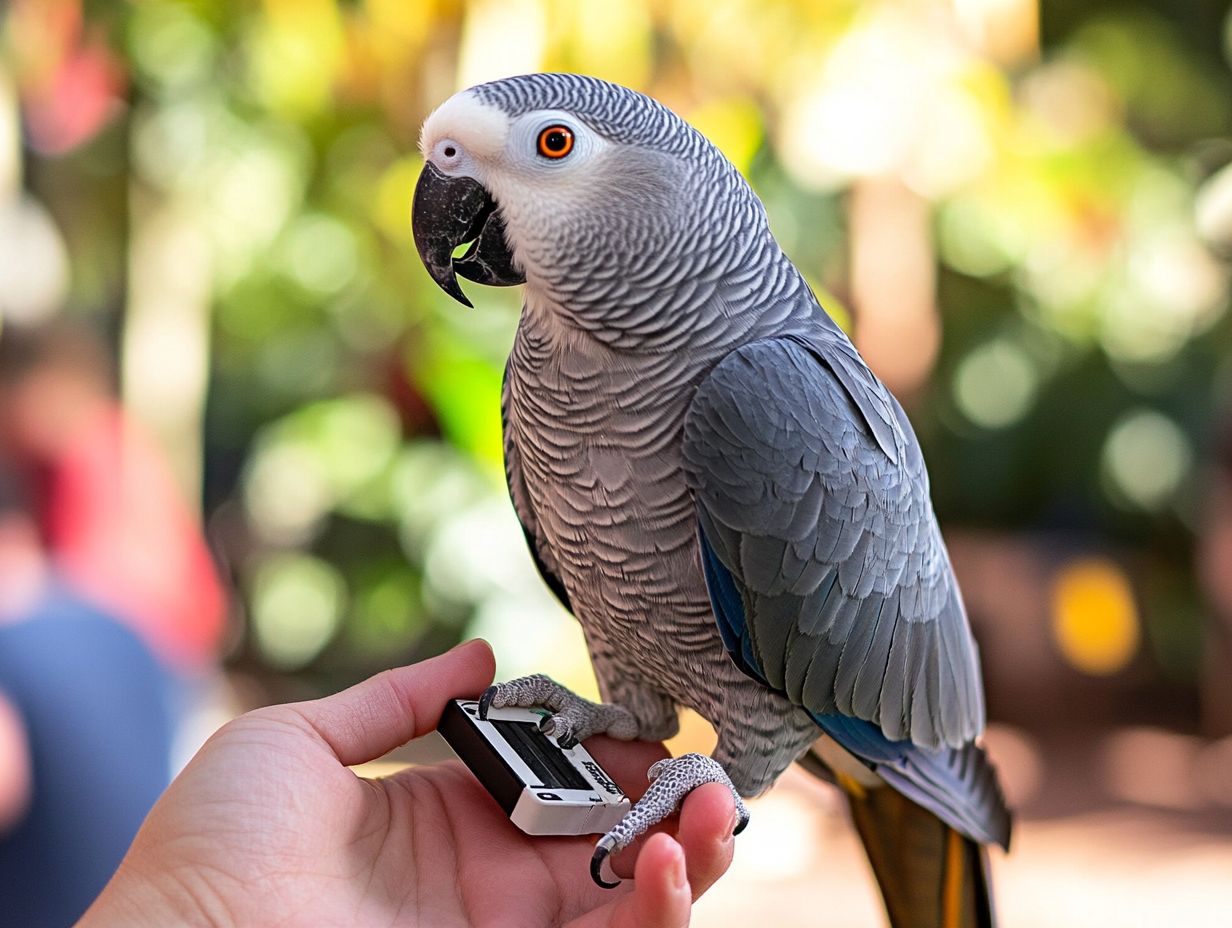
- Boost communication and bonding with your bird!
- Encourage positive behavior and provide mental stimulation.
- Use clicker training for tricks and enrichment, building trust and confidence.
1. Improves Communication and Bonding
Clicker training can enhance the communication between you and your bird, creating a better bond by understanding how they communicate. Incorporating 5 essential items for bird training can also improve the training experience.
It’s essential to know how your feathered friend perceives cues, as they respond best to distinct sounds and consistent signals. The clicker sound acts as a precise event marker a sound that tells your bird it has done a good job.
For example, during a training session with an African Grey Parrot, you might teach the bird to wave by clicking the instant it lifts its foot, followed by a treat. This reinforces the behavior and builds trust between you and your bird.
With Green Cheek Conures, you can make training fun by playing games like fetch or using a stick for targeting. This leads to a happy bird and a fulfilling companionship!
2. Encourages Positive Behavior
Clicker training is a fantastic method of rewarding good behavior. It effectively encourages the desired actions in your birds, and you can explore creative ways to train your bird to enhance their learning experience while rewarding them for their efforts during training sessions.
By using a clicker, you can mark the exact moment your bird does something you want like turning in a circle or chirping on command clearly signaling what behavior you re reinforcing. This not only improves communication but also deepens trust.
For instance, when your parrot successfully steps up onto a perch, a click followed by a treat strengthens that connection in its mind, motivating the bird to repeat that action later. A carefully crafted reward system that aligns with your bird’s favorites whether it’s a special treat or a bit of affection can speed up the learning process, enabling you to teach more complex tricks and achieve better behavioral outcomes.
3. Provides Mental Stimulation
Engaging in clicker training gives you a unique opportunity to provide essential mental stimulation for your birds, enhancing their thinking skills and problem-solving abilities, as highlighted in the benefits of daily training for birds.
By incorporating play stands into your training routine, you create a stimulating environment filled with various enrichment activities that challenge your birds to think creatively. Using tools like foraging toys or puzzle feeders can spark their curiosity, allowing them to explore and interact in ways that reflect their natural behaviors.
These methods keep your birds entertained, supporting their overall well-being and making training a rewarding experience for both you and your avian friend.
4. Can Be Used for Training and Enrichment
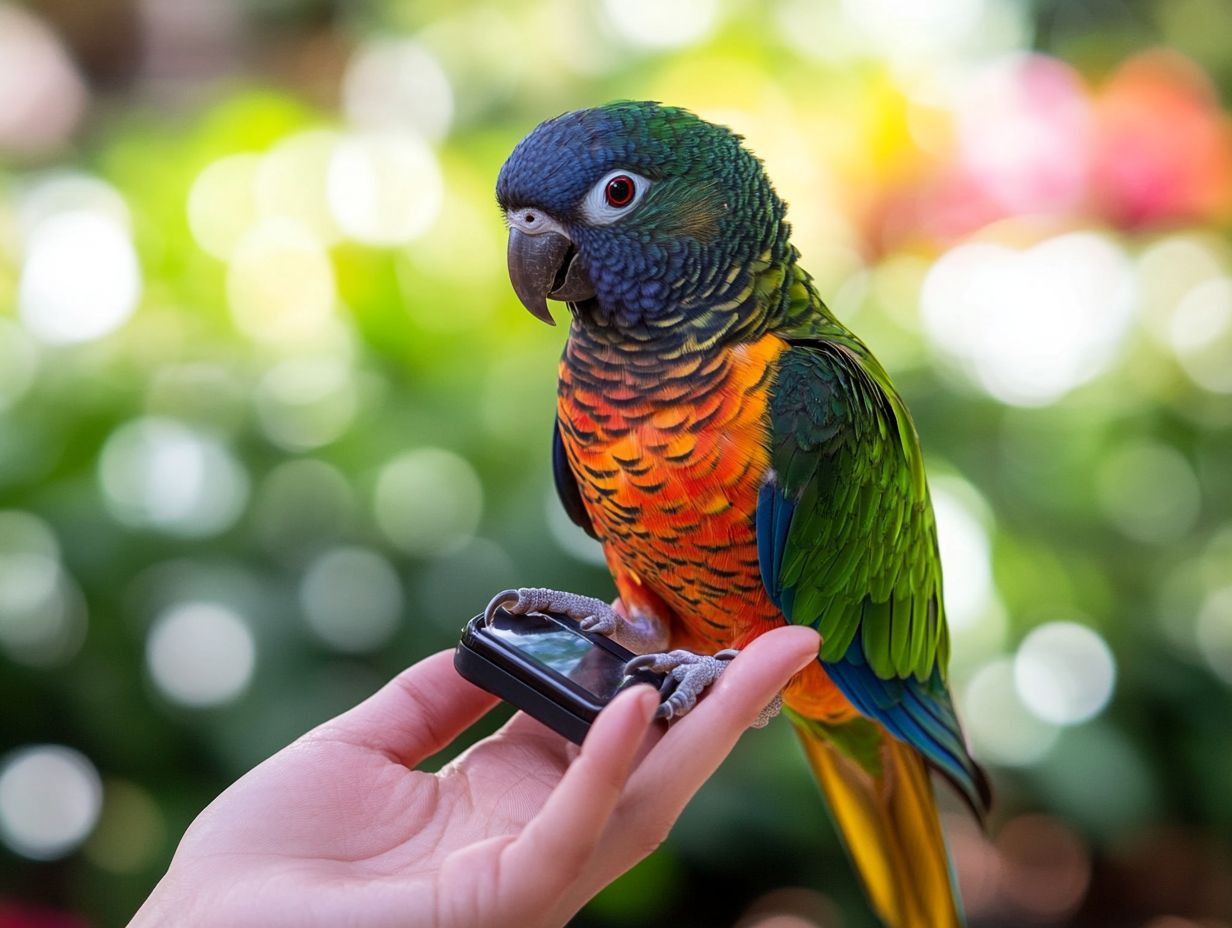
Clicker training serves a dual purpose in the world of animal training; it’s not just a method for teaching specific behaviors but also a tool for enhancing the lives of birds. For those looking to expand their knowledge, exploring the 5 best online resources for bird training can be incredibly beneficial.
Integrating this technique into your daily routine is easy. Just dedicate short, focused sessions that promote learning and deepen the bond between you and your bird.
A crucial aspect of this training is the targeting technique, a technique where your bird touches a target with its beak, resulting in precise responses. This foundational skill opens the door for your feathered friend to master various tasks, such as stepping onto a perch or performing tricks like waving or spinning.
Renowned trainers frequently highlight the effectiveness of this approach. Positive reinforcement inspires birds to engage eagerly in their training. Over time, these small, consistent practices can lead to remarkable improvements in your bird’s ability to learn and interact, enriching both their environment and your experience as a trainer.
5. Builds Trust and Confidence
Through consistent clicker training, you can effectively build trust and confidence in your avian companion. This approach reinforces positive behaviors and creates a secure learning environment.
This method sparks desired actions and builds an amazing bond! One parrot owner saw her African Grey overcome fear of hands, while another transformed her timid budgie into a playful friend through engaging activities.
These experiences illustrate how a supportive atmosphere, infused with patience and encouragement, can lead to extraordinary growth in a bird’s confidence and behavior. As trust builds, so does the joy of shared play and communication between you and your feathered friend.
What Is Clicker Training and How Does It Work?
Clicker training is a powerful technique for training pets, using a clicker to precisely mark desired behaviors. This method allows you to communicate with your pet through the distinct sound of the clicker, which serves as a dependable event marker throughout the training journey.
By harnessing the principles of positive reinforcement, you reward your pet for good behavior, encouraging them to repeat those actions. When your furry friend hears the click, they begin to associate it with a reward, establishing a clear connection between their behavior and the positive outcome that follows.
Incorporating verbal cues into this process enhances your communication, clarifying your expectations and ensuring consistency. As your pet learns to respond to both the click and your verbal commands, they develop a deeper understanding of behavior, fostering a more harmonious relationship between you and your beloved companion.
What Types of Birds Can Benefit from Clicker Training?
Clicker training can work wonders for a range of birds, including popular species like African Grey Parrots, Green Cheek Conures, and Galahs, all of which respond enthusiastically to structured training sessions.
Budgerigars, cockatiels, and lovebirds also flourish with this approach, each displaying unique behavioral traits that can be enhanced through targeted techniques. For instance, African Grey Parrots, with their remarkable cognitive abilities, can master intricate tricks and commands. Meanwhile, Green Cheek Conures, infused with playful curiosity, eagerly dive into training exercises. And let s not forget the affectionate Galah, which craves interaction and thrives on positive reinforcement.
Each of these species has its own learning style. When you consistently pair clicks with treats, you create a strong association that encourages desirable behaviors while deepening the bond between you and your bird.
Start your clicker training journey today and watch your bird thrive!
What Are the Basic Steps of Clicker Training for Birds?
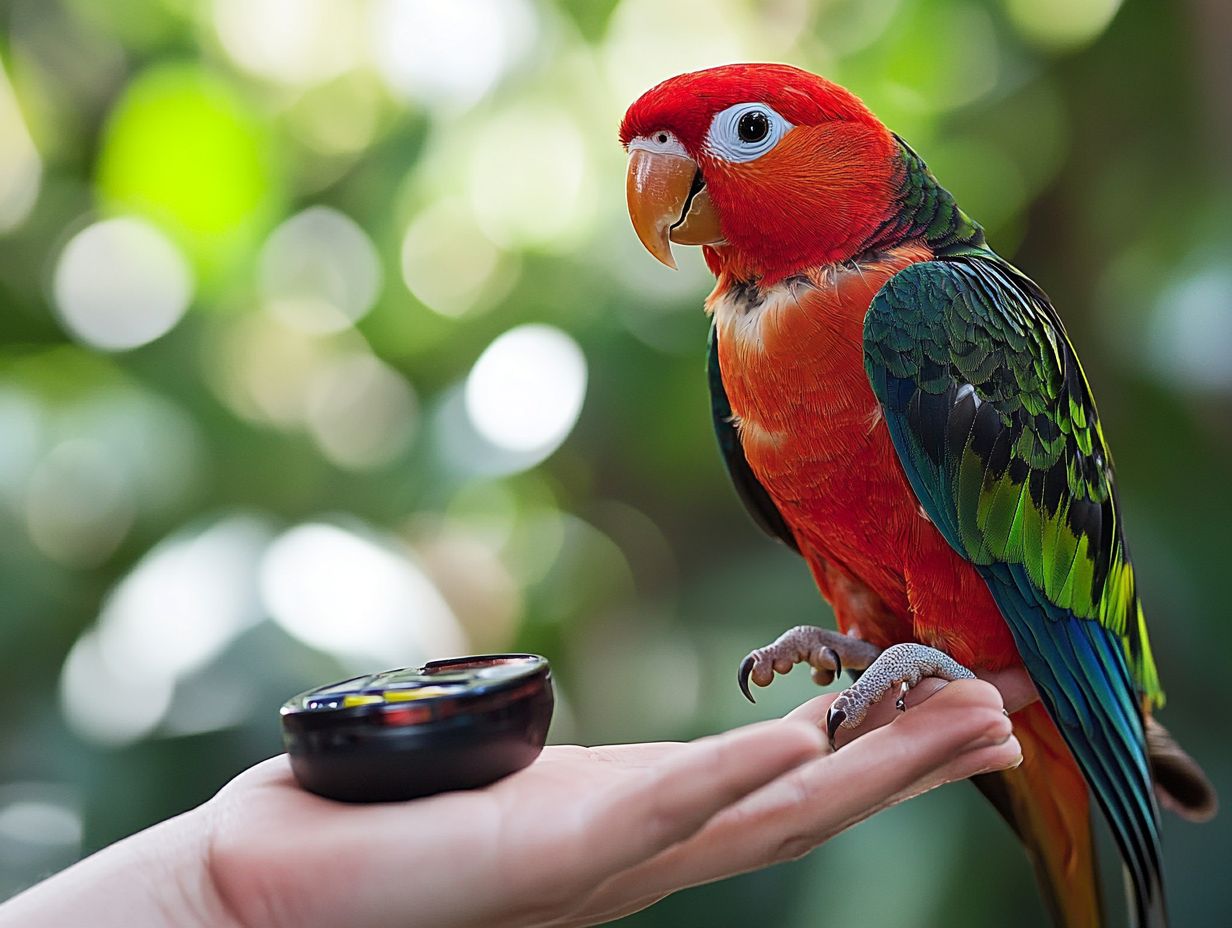
Clicker training for birds involves a step-by-step process that includes introducing the clicker sound and establishing a reward system. For those looking to enhance their skills, exploring 5 key strategies for training multiple birds can help you gradually build on training behaviors through consistent practice during training sessions.
This method enhances your communication with your feathered companion, creating an interactive and engaging learning experience. Fostering a positive environment is essential, as it helps your bird feel safe and encouraged.
- Familiarize your bird with the clicker sound without any immediate expectations for behavior. Allow it to associate the sound with a reward.
- Once your bird is comfortable, use treats consistently to reinforce desired actions. Ensure that each click signifies a success.
Remember, patience is key! Both you and your bird will thrive with a steady training schedule that respects its unique learning curve.
What Are Some Common Mistakes to Avoid in Clicker Training?
Many bird owners unknowingly stumble into common pitfalls during clicker training. Issues like inconsistent click timing, unclear cues, and misunderstanding of behavioral techniques can hinder your training journey.
To enhance your training experience, appreciate the importance of maintaining a steady tempo when clicking. Deliver well-defined commands using your clicker. Beginners often miss the mark by failing to provide positive reinforcement immediately after the desired behavior.
To sidestep these missteps, practice your timing and use consistent, straightforward cues that your bird can easily associate with the behavior.
Set specific training goals and break them down into manageable steps. Celebrate every small victory, as it boosts confidence for both you and your bird!
How Can Clicker Training Be Used for Specific Behaviors and Tricks?
Clicker training is a highly effective method for teaching your birds specific behaviors and tricks. You can employ targeted techniques such as the targeting technique, where your bird learns to touch or follow an object to receive a reward. For more detailed strategies, check out these 5 tips for training older birds.
This positive reinforcement approach utilizes a clicker as a precise marker for desired actions, fostering clear communication between you and your feathered companion. By directing your bird’s attention to a specific target, like a target stick or an adjustable perch, you can encourage them to perform impressive tricks such as:
- Step-ups: Teach your bird to step onto your finger, enhancing trust and interaction!
- Turns: Encourage your bird to turn on command, adding fun to your training!
- More complex behaviors: Teach your bird to spin in circles for an impressive display!
For example, when teaching your bird to turn using a verbal cue, use the clicker to signal when they successfully follow the target. Reinforce the behavior with tasty treats. As your bird associates the clicker sound with rewards, their motivation will soar, making the entire process a delightful bonding experience!
What Are Some Additional Tips for Successful Clicker Training?
To elevate your clicker training, consider a few strategies that can significantly enhance your success. Understand different training techniques, keep your sessions short and engaging, experiment with a variety of favorite treats, and most importantly, practice patience throughout the process.
Discovering each bird s unique personality is essential, as individual responses to stimuli can vary greatly in animal communication. By closely observing their behavior and adjusting your techniques, you can create a captivating training environment. Incorporating interactive elements and allowing for breaks during your sessions can spark enthusiasm and foster trust.
Focus on positive reinforcement and celebrate small victories during your sessions to strengthen your bond. A tailored approach combined with consistent encouragement will lay the groundwork for successful bird interactions, enriching both the training experience and your connection with your bird.
Frequently Asked Questions
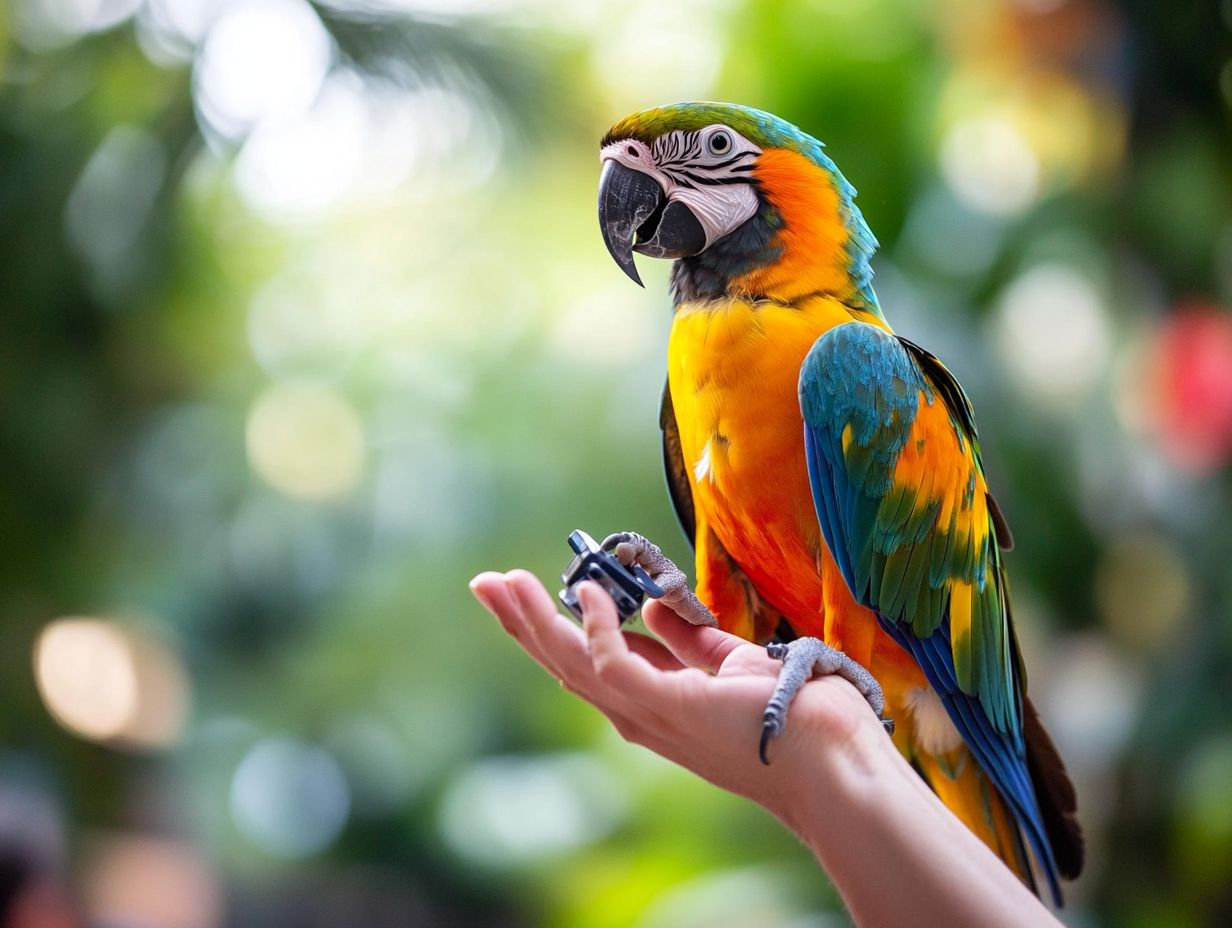
What is clicker training for birds?
Clicker training for birds is a method that rewards good behavior using a handheld device called a clicker to mark desired actions. This method trains birds to perform specific tasks or teach tricks.
What are the benefits of clicker training for birds?
- Improved communication
- Increased bonding
- Mental stimulation
- Stress reduction
- Better overall behavior
How does clicker training improve communication with birds?
The clicker provides a clear and consistent signal, making it easier for birds to understand which behaviors are rewarded during the training process. This helps establish strong communication between the bird and the trainer.
What role does clicker training play in bonding with birds?
Clicker training involves rewarding good behavior, strengthening the bond between the bird and the trainer. By using simple tricks to start training your bird, the bird learns to associate the clicker sound with treats and positive attention, enhancing animal training.
Can clicker training benefit a bird’s mental health?
Yes, clicker training keeps birds’ minds active, which is important for their overall well-being, especially for parrot owners. The training process engages them and allows them to learn new behaviors.
How can clicker training help reduce stress in birds?
Clicker training focuses on positive reinforcement rather than punishment, helping reduce stress while utilizing a reward system. This method encourages birds to make positive choices, avoiding negative associations that can cause stress or fear. To learn more about how to identify if your bird is responding well, check out the 5 signs your bird enjoys training, which debunk many clicker training myths.

